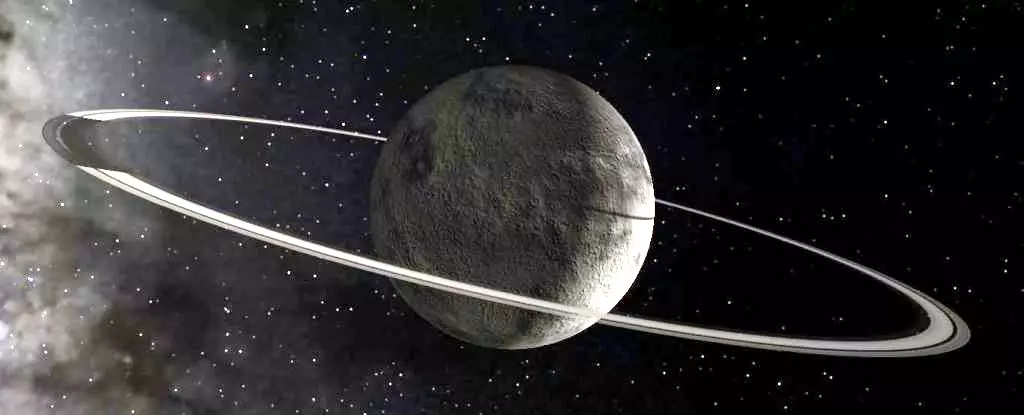Located in the remote reaches of our Solar System, beyond Jupiter, lies a fascinating object known as Chiron. Classified as a centaur—a category of celestial bodies that inhabit the space between Jupiter and Neptune—Chiron stands out distinctly from its peers. Recent advancements in observational technology, particularly through the James Webb Space Telescope (JWST), have enabled astronomers to unveil astonishing features of Chiron, elevating it from mere cosmic obscurity to the focus of scientific intrigue. As described by physicist Charles Schambeau, Chiron embodies unique attributes that provoke endless questions regarding its behavior and composition.
What sets Chiron apart in the vast cosmos is its dualistic behavior; it sometimes acts like a comet while simultaneously exhibiting traits typical of asteroids. This atypical nature poses significant questions. Why does Chiron demonstrate comet-like activity, intermittently releasing gas and dust, a phenomenon not commonly associated with centaurs? This behavior may be attributed to solar heating, which can alter the icy surfaces of centaurs, releasing materials into space during specific periods. The complexities of Chiron’s physical characteristics call for a deeper understanding of what drives such transformations and how they relate to the overall evolution of small celestial bodies within our Solar System.
Scientists anticipate that Chiron serves as a time capsule from the Solar System’s formation roughly 4.5 billion years ago. As it traverses the enigmatic expanse between Jupiter and Neptune, its surface is considered a repository of early Solar System materials. Researchers led by Noemí Pinilla-Alonso from the University of Oviedo in Spain seize this opportunity. With the JWST’s exceptional capabilities, they hope to unlock the secrets hidden in Chiron’s surface and subsurface layers, gaining insights into the primordial conditions that prevailed in the early Solar System. Pinilla-Alonso emphasizes the importance of active centaurs like Chiron, asserting that they provide a unique perspective on the past state of our solar neighborhood, a timeline that is otherwise inaccessible through direct observation.
A pivotal aspect of the JWST observations involved analyzing the gas and dust emissions from Chiron’s coma—the nebulous cloud encircling the centaur. The team aimed to identify the composition of this ejected material, drawing correlations between the gases escaping from Chiron’s surface and the icy constituents found there. Pinilla-Alonso states that the unique setup allows for observations of both surface ices and the gaseous emissions, generating a comprehensive image of Chiron’s physical and chemical properties. The ability to discern the relationship between these materials enhances our understanding of how solar radiation affects their composition and structural integrity.
Through the near-infrared observations conducted by JWST, researchers identified various molecules, including carbon dioxide, carbon monoxide, methane, and water ice, among others. The detection of methane is particularly significant, suggesting a rich presence of this molecule within Chiron’s coma. There lies a subtle humor amongst scientists, acknowledging the potential for jokes about centaur flatulence, yet the findings themselves are profoundly serious, revealing the potential for richer discussions about the dynamics of these celestial bodies.
The prevailing belief among astronomers is that centaurs, including Chiron, originated from the outer reaches of the Solar System, specifically from a vast population of trans-Neptunian objects (TNOs). These distant bodies are believed to encapsulate the primordial debris that shaped the Solar System. As these objects venture closer to the Sun, the sublimation of ices occurs, unleashing elemental materials. The data derived from Chiron suggests it may possess some of the original ingredients critical to its embryonic formation, including methane, carbon dioxide, and water ice. Other molecules—such as ethane, propane, and acetylene—may have formed through surface reactions, potentially hinting at more complex chemical processes occurring on Chiron.
The ongoing observations of Chiron prepare astronomers for an unfolding narrative of these bizarre, icy celestial objects. Despite the oddities observed through JWST, researchers like Pinilla-Alonso caution that these characteristics should not obscure potential underlying commonalities across active centaurs. Each observation leads to further questions, and as Chiron continues its orbit, scientists are eager to examine variations in its behavior and composition over time. What reveals itself in Chiron’s evolving nature may ultimately rewrite our understanding of centaurs and enhance our grasp of our Solar System’s formation and evolution.
Through dedicated research and innovative technology, Chiron stands poised to impart invaluable knowledge, deepening our cosmic narrative and igniting curiosity about the distant objects that orbit our Sun. As we delve deeper into this enigmatic realm, the lessons learned from Chiron and its ilk will resonate through time, illuminating the past while guiding future exploration.


Leave a Reply